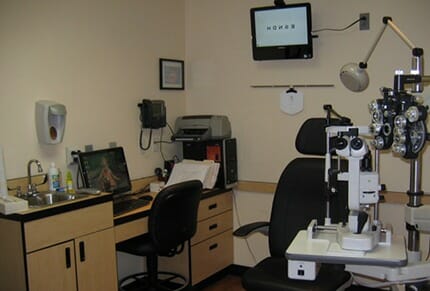Why Regular Checkups at the Eye Doctor Are So Vital

It might come as a surprise, but a lot more than field of vision can be obtained from an eye exam. During routine inspection, doctors often look to the retina for clues on vision and eye health.
The retina, which is positioned in the back of the eye, provides a crucial component for clarity of vision and overall health of the eyes. The retina consists of a thin lining of tissue near the optical nerve, and functions to focus and transmit light images to the brain. Also a revealing component of nerve health and proper blood vessel functioning, the retina can offer telltale signs as to some other key health conditions. Here are five such conditions that can be uncovered through a routine eye exam.
No. 1 Diabetes
Minor bleeding from the retina, which can signal diabetic retinopathy, may be indicative of type 2 diabetes. Untreated diabetic retinopathy can lead to blindness, however, the progression of this condition can be managed through early detection and proper lifestyle changes, such as eating the right foods and maintaining a healthy weight.
No. 2 Cancer
A regular eye exam can not only preserve vision and eye health: it can also be a complete lifesaver. A number of cancer-related illness have a direct affect on the eyes, including leukemia, lung cancer, breast cancer, malignant melanoma, and brain tumors. Some forms of retinal bleeding may be associated with leukemia, whereas brain tumors can affect field of vision.
Lung cancer can also spread to the eye and cause ocular changes, including choroidal metastasis and horner syndrome, while melanoma of the eye can effect the choroid, iris, ciliary body, orbit, conjunctiva, and iris, and may present symptoms such as redness, pain, changes in the color of the iris, and vision problems in one eye.
No. 3 Multiple Sclerosis
Multiple Sclerosis, or MS, is an autoimmune disorder that is completely debilitating and involves the eventual breakdown of the central nervous system. Eye and vision symptoms associated with Multiple Sclerosis are common and can include optic neuritis. Optic neuritis can cause blurred vision and blindness, typically in one eye, along with graying vision, double vision, and temporary blindness.
No. 4 Rheumatoid Arthritis
Rheumatoid arthritis is an autoimmune condition that affects the joints of the hands and feet. At least one-fourth of Rheumatoid arthritis sufferers also have issues with vision and eye health. Dry eyes is a common symptom among RA patients.
No. 5 High Blood Pressure
High blood pressure can damage the blood vessels and strain the arteries, leading to heart disease. In fact, thinning blood vessels located in the retina can send up a direct red flag for heart disease, which can be particularly revealing for those who don’t already present more conventional risk factors.
Routine eye exams are necessary for preserving vision, but they’re also crucial for maintaining overall health. Be sure to check in with your eye doctor for an annual visit in order to monitor your health and prevent illness.
[Photo Credit: Fatula Family Eyecare]

